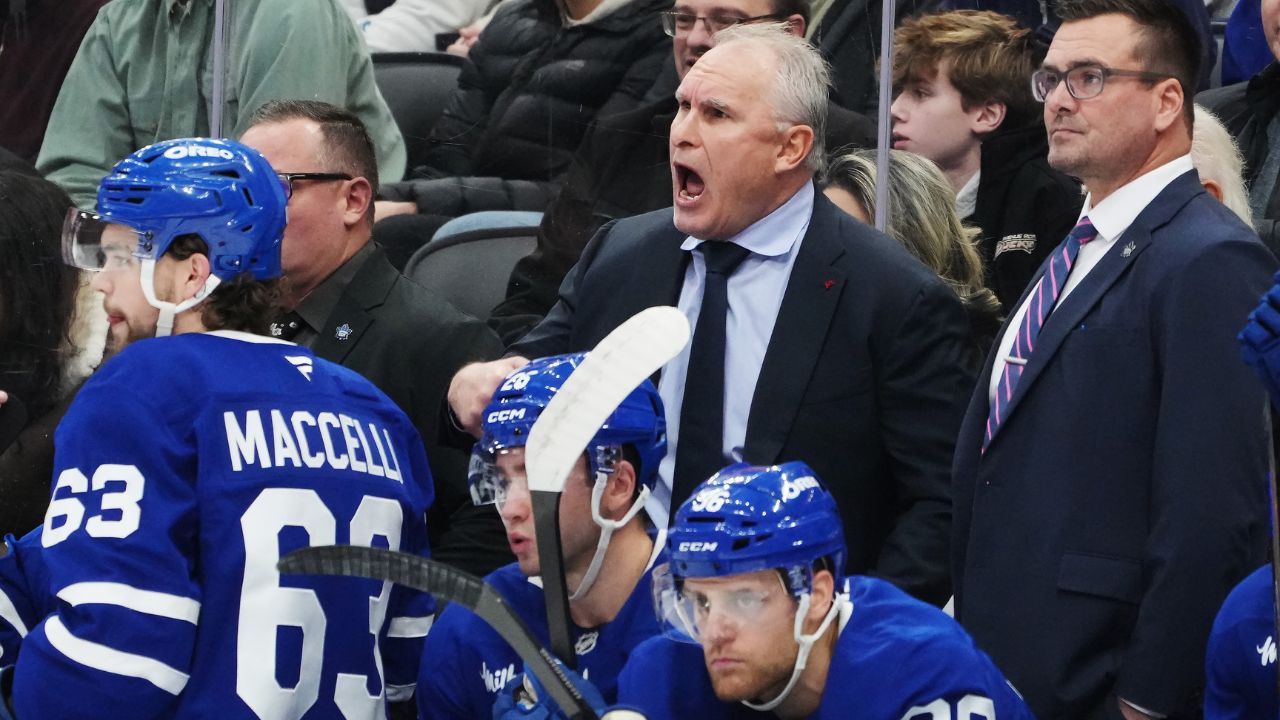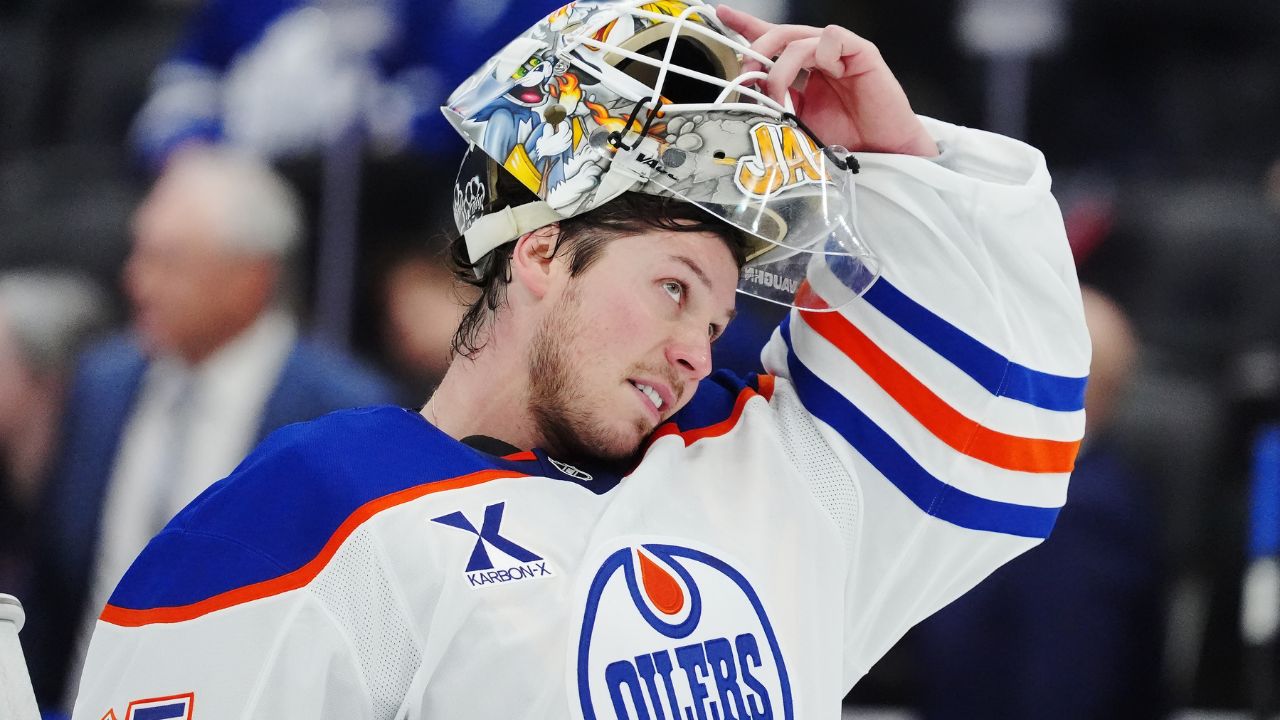
CALGARY — If Mitch Marner really wants to make more money than Auston Matthews, he should be able to.
Doing so and remaining a Toronto Maple Leaf, however, is a more complicated proposition.
But the player can certainly build that case, and the team can find the budget to make it happen — if it so desires.
While it was understood that the NHL’s long-stunted salary cap would begin a steep incline starting next season, last Friday’s joint announcement from the league and its Players’ Association (now bosom buddies, apparently) gave clarity to both executives and agents just how quickly the money is set to flow.
To get from the current $88-million ceiling to 2027-28’s projected $113.5 million, the upper limit will perform a triple-jump of bumps: $7.5 million, $8.5 million and $9.5 million.
That means we’re in for three straight record-setting increases. And while the 2025-26 limits are in stone, the 2026-27 and 2027-28 estimates are conservative and can be upped based on hockey-related revenue.
How much of a financial boost does the NHL see from the return of internal competition, the renegotiation (and likely split) of Canada’s national broadcast rights (due 2026), and — dare we say it — expansion beyond the 32?
2025-26
Upper limit: $95.5 million
Lower limit: $70.6 million
2026-27
Upper limit: $104 million
Lower limit: $76.9 million
2027-28
Upper limit: $113.5 million
Lower limit: $83.9 million
As with all league news, the natural follow-up arises: OK, but how does this affect the Leafs?
In short, positively.
Higher spending limits will tilt the advantage to the league’s richer franchises like the Maple Leafs, Rangers, Canadiens, Kings, and Bruins.
A raise for a must-keep like pending RFA Matthew Knies is a no-brainer, and early-strike extensions for Jake McCabe and Joseph Woll look smart.
Under the new estimates, the Leafs project to have $28.8 million in free cap space for 2025-26, $46.4 million in 2026-27, and $61.3 million in 2027-28, according to PuckPedia.com.
That’s with a locked-up core of Auston Matthews, William Nylander, Max Domi, Morgan Rielly, Chris Tanev, McCabe, Oliver Ekman-Larsson, and Woll through the duration of those seasons.
Thanks to the hard cap and the Oprah-style trade clauses given away by the previous regime — You get a no-move! You get a no-move! You get a no-move! — general manager Brad Treliving has had little wiggle room to remodel the roster under his vision.
That changes this summer, with the eight-figure salaries of prime Marner ($10.9 million) and a Father Time–fighting John Tavares ($11 million) set to come off the books.
Tavares will accept a pay cut to extend, and recent games have been a reminder of how frighteningly thin Toronto’s centre depth is without him around.
With the cap spiking, Treliving could get creative with deferred payments or stretching term to land on an AAV that is respectful to the NHL’s 70th-highest all-time scorer and doesn’t prohibit the team from adding another middle-six pivot via trade or free agency.
The Marner file, of course, is thornier.
And while we understand that both team and player would prefer to continue the relationship, the superstar has been eligible to re-sign for more than seven months and has not.
Marner’s agent, Darren Ferris, has a track record of taking clients to the deadline. Moreover, the winger — like Nylander before him — is enjoying the best regular season of his life.
He’s on pace for a career-high 110 points, while playing a prominent role on an improved penalty kill, quarterbacking the power-play, and skating a team-high 21:28 per night.
Point blank: Marner stands as the front-runner for 2024-25 Maple Leafs MVP.
If Marner wants (a) maximum term and (b) market value, asking for an AAV above Matthews’ $13.25 million — which was only for four seasons and signed under a lower ceiling — is not unreasonable.
Surely, Chicago or Utah or Columbus or San Jose or some other franchise hungry for star power and scoring would pony up.
Getting that type of salary in Toronto, however, comes with big smoke.
Marner, of course, is no stranger to scrutiny in his hometown. Through 52 games of the most critical campaign of his career, he has thrived under pressure.
Will Treliving draw a hard line, like Colorado’s Chris MacFarland, and institute an internal salary ceiling that no one’s paycheques should equal those of Matthews?
Would Marner, like Matthews, consider accepting less term to take another shot at free agency in his early 30s?
And which elite winger, Marner or Carolina’s Mikko Rantanen, signs first? Because, surely, their cap hits could be lobbed as comparables.
Most important: Does Treliving believe, as his predecessor did, that a top-heavy roster of star forwards — three of them raking $11.5 million plus — is a Stanley Cup–winning recipe?
And how much of a voice do hot-seat Leafs president Brendan Shanahan and new MLSE CEO Keith Pelley believe in that strategy?
When Marner signed his first extension in 2019, after a tense back-and-forth with then-GM Kyle Dubas, his $10.9-million AAV equalled 13.37 per cent of the cap. (Armed with the understanding of inflation, agents like negotiating with percentages, not dollars.)
But Dubas was buying some cheaper RFA seasons as part of that, and Marner (despite the playoff disappointments) is a better and more valuable player today.
When Matthews signed his latest deal two summers ago, his percentage-of-the-cap average was 15.07 per cent, up from 14.27 per cent in his first extension.
We can’t see Marner accepting a long deal that pays him 13.37 per cent of the cap. If he was willing to do that, he should already be signed.
So, let’s say he signs for 14 per cent of the $95.5 million ceiling, knowing his percentage would shrink quicker than ever over time. That would make for a $13.37 million AAV — a shade over Matthews.
That’s not a crazy ask when you realize the whole league has more budget to spend than ever, and the considerable dropoff in coveted UFA wingers from Rantanen and Marner to, say, the Brock Boesers of the market.
This is a negotiation between math and optics, market and sentiment, internal ceilings and external possibilities.
And with the Avalanche already making their choice, the uncertain future between Marner and the Maple Leafs becomes the most fascinating case for where superstars and teams take salaries in this flush new landscape.
At least until Connor McDavid comes due in 2026.






